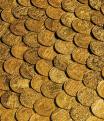2025. April 26. Saturday
Hungarian National Museum - Budapest
 |
Address: 1088, Budapest Múzeum körút 14-16.
Phone number: (1) 338-2122
E-mail: info@hnm.hu
Opening hours: Tue-Sun 10-18
|
The exhibition has closed for visitors.
2011.02.01. - 2011.03.20.
Museum tickets, service costs:
|
Ticket for adults
|
1100 HUF
|
|
|
Ticket for students
|
550 HUF
|
|
|
Ticket for soldiers
|
550 HUF
|
|
|
Ticket for pensioners
|
550 HUF
|
|
|
Ticket for families
(2 adults + children)
|
1150 HUF
|
/ family
|
|
Individual guide
|
400 HUF
|
/ capita
|
|
Group guide
(max. 5 people)
|
1800 HUF
|
/ group
|
|
Group guide
(11-15 people)
|
6000 HUF
|
/ group
|
|
Group guide
(max. 15 people)
|
5500 HUF
|
/ group
|
|
Group guide
(16-25 people)
|
9700 HUF
|
/ group
|
|
Group guide
(1-5 people)
|
1500 HUF
|
/ capita
|
|
Group guide
(6-10 people)
|
13000 HUF
|
/ group
|
|
Group guide
(11-15 people)
|
16000 HUF
|
/ group
|
|
Group guide
(16-25 people)
|
24000 HUF
|
/ group
|
|
Group guide for students
(max. 25 people)
|
4500 HUF
|
/ group
|
|
Group guide for students
(max. 15 people)
|
6000 HUF
|
/ group
|
|
Group guide for students
(max. 25 people)
|
12000 HUF
|
/ group
|
One of the greatest finds in the 20th century, the Golden Treasure of Kosice, is to be shown first time in Hungary. The temporary exhibition presenting relics of Royal Hungary and Transylvania, universal treasures of Europe and common heritage with the Slovaks opens on 1 February 2010 at the Hungarian National Museum.

The items in tone of the greatest finds from Historic Hungary are from the 15-17th century. The collection consists of over three-thousand medallions and a two-meter long Renaissance golden necklace. The treasure was probably hid during the Thököly Revolt in the flooring of the Szepesi Chamber building downtown Kosice. It was discovered their in 1935 when the building was reconstructed. The precious find is held at the East-Slovakian Museum, with the most valuable items of the golden medal of Ferdinand I from 1541, which is considered a rarity due to its being so rare.
The treasure is guarded and shown taken extreme safety measures. The safe room of the Hungarian National Museum, also holding the Hungarian coronation insignia, fulfils the most modern needs. Today even the mantle is preserved in the safe room. The complete set of golden treasures from Kosice is on show in this room. In addition to the golden necklace, the visitors will also see a copper bowl ornamented with mystical animals.

The items in tone of the greatest finds from Historic Hungary are from the 15-17th century. The collection consists of over three-thousand medallions and a two-meter long Renaissance golden necklace. The treasure was probably hid during the Thököly Revolt in the flooring of the Szepesi Chamber building downtown Kosice. It was discovered their in 1935 when the building was reconstructed. The precious find is held at the East-Slovakian Museum, with the most valuable items of the golden medal of Ferdinand I from 1541, which is considered a rarity due to its being so rare.
The treasure is guarded and shown taken extreme safety measures. The safe room of the Hungarian National Museum, also holding the Hungarian coronation insignia, fulfils the most modern needs. Today even the mantle is preserved in the safe room. The complete set of golden treasures from Kosice is on show in this room. In addition to the golden necklace, the visitors will also see a copper bowl ornamented with mystical animals.
